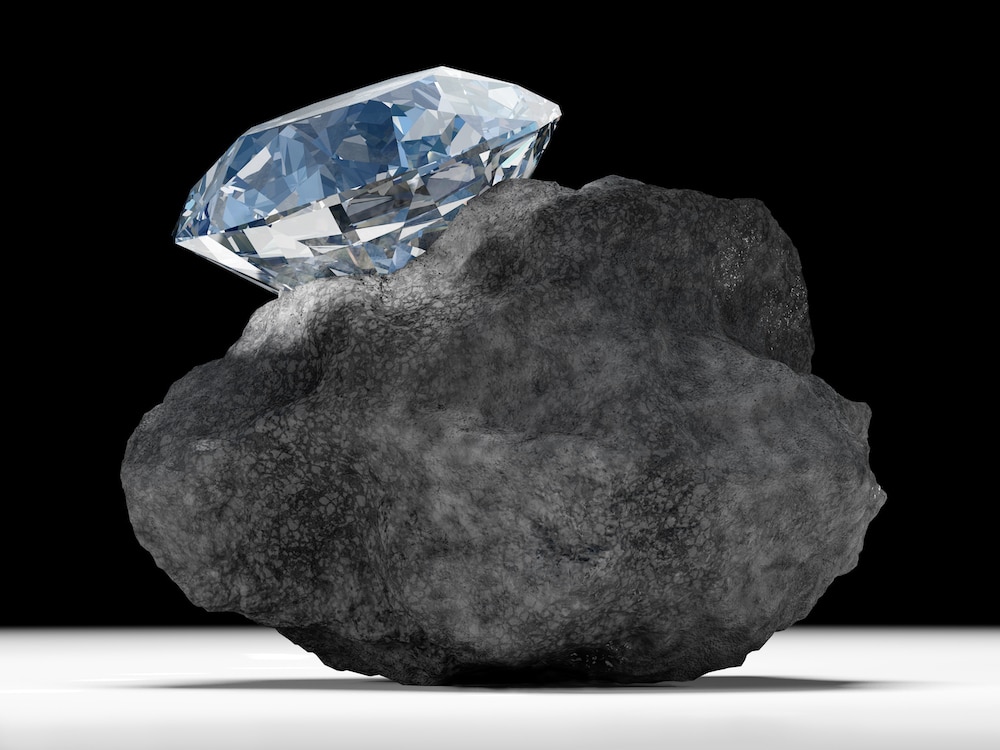Create a free profile to get unlimited access to exclusive videos, sweepstakes, and more!
Weird water dynamics fuel deep earthquakes and fist-sized diamonds
That's a chaos gem if we've ever seen one.

Earthquakes are no laughing matter, unless of course they’re the premise of a skit involving a 4.3 magnitude shakeup and a surprising concentration of hilariously named citizens who are all, thankfully, safe and well.
While earthquakes can be a source of comedy and adventure in TV and movies, some of them have presented something of a mystery in the real world. Earthquakes are typically surface level events, resulting from the interactions between tectonic plates where they meet at fault lines. Based on our existing models, there should be a hard stop at about 300 kilometers (186.4 miles) below the surface, beyond which earthquakes can’t occur. At those depths, the pressures and temperatures should be high enough that rock becomes liquid and flows smoothly, rather than bumping up against itself with the hard jolts typical of earthquakes. However, that hasn’t stopped deep earthquakes from happening.
The existence of earthquakes hundreds of kilometers below the surface has been something of a seismological headscratcher for a long time, but new research has presented evidence for why they might be happening, and the secret to the mystery’s unraveling involved massive diamonds the size of your fist.
Scientists from the Earth and Planets Laboratory at the Carnegie Institution for Science crafted new models using data from large diamonds in hopes of figuring out how earthquakes occur at especially low depths. Their findings were published in the journal AGU Advances.
One potential hypothesis for the origin of these earthquakes involved the release of trapped water from sinking chunks of rock, but it wasn’t previously clear how that might happen. It was generally thought that slabs of rock being pushed deeper into the Earth would release their water before they reached 300 kilometers below the surface. If water release was causing these earthquakes, it wasn’t clear how it was getting so far underground. Large diamonds provided a clue.
As slabs of rock heat up under the immense pressure, they liquefy and release minerals along with water. That process facilitates the formation of diamonds which sometimes capture bits of the surrounding material inside their crystallized structures. These inclusions provide information about the characteristics of the rock within which they were formed.
Scientists found a correlation between the formation of diamonds and the release of water, happening at depths far beyond the 300-kilometer boundary. Scientists found that once a bit of rock reaches 580 degrees Celsius, it can no longer hold onto its water as well as it once could. That critical temperature is reached at different depths depending on a number of factors.
The defining characteristic appears to be the age and thickness of the slab in question. Relatively young slabs are still comparatively warm and, thus, melt pretty quickly — at least on geological timescales — as they sink. While we imagine that rock becomes magma quickly underground, some of the slabs are old, cold, and thick, measuring kilometers in depth, and can take millions of years to heat through.
Those slabs can migrate as far as 700 kilometers beneath the surface before they release all of the water and minerals they're holding inside. When that happens, diamonds are formed trapping some of the water and minerals inside, and underground earthquakes are triggered.
Luckily for us, while these underground earthquakes can be pretty strong, with magnitudes greater than 4 on the Richter scale, they’re typically too deep for us to feel them on the surface. We wouldn’t know about them at all if not for our sensitive scientific instruments, and we wouldn’t know how and why they happen if not for the massive gemstones which form alongside them.


























